Are you planning to open your own small farm or do not already know what to do with excess milk and want to competently process it into cream, butter, cheese? With a manual or electric separator, the problem can be solved.
The editors of the site "bestx.htgetrid.com/en/" made a brief instruction on choosing a separator, highlighted all the pitfalls when buying equipment, and also made a rating of the most popular models.
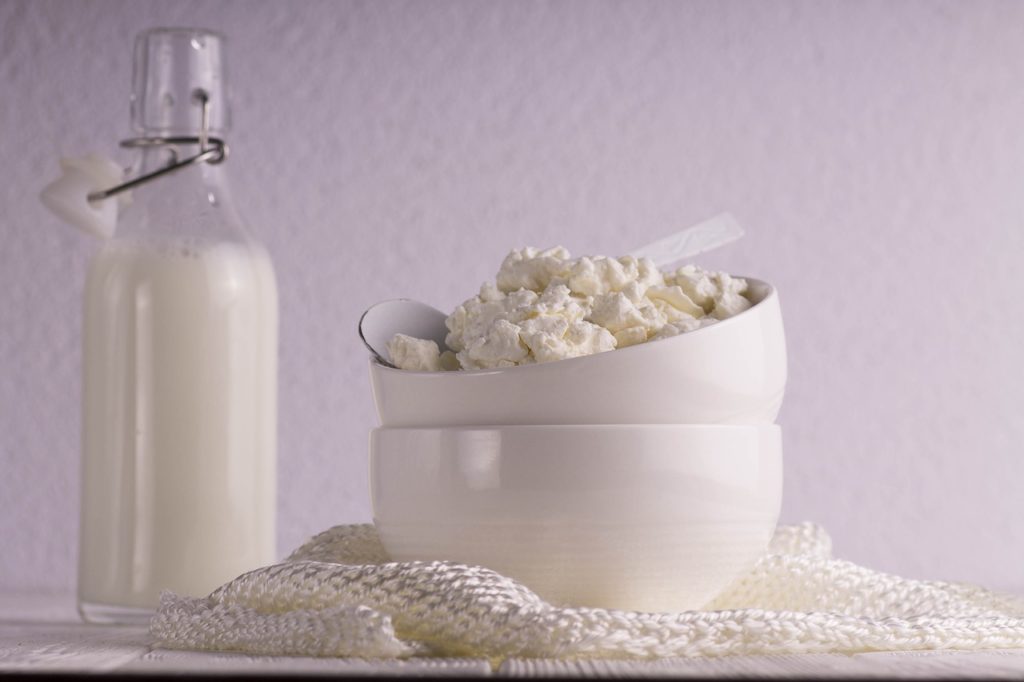
Content
What is a separator
A separator is a device for separating one substance from another or separating a substance from a mixture of several. The milk separator separates the milk into 2 fractions with a centrifugal method: with more fat and less.
How the device works
A separator is essentially a centrifuge, and any centrifuge uses centrifugal force. The principle of operation is simple: during rotation, the heavy part of the milk (return) is sifted out to the side, to the walls, but the lighter part, which contains fat, accumulates in the center. The faster the rotation, the faster the separation occurs.
Let's consider the operation of the device.
- First, the milk is poured into the milk receiver, and from there it enters the rapidly rotating drum.
- There are special holes in the bowl. It is through them that the milk gradually flows down to the separating plates.
- The rapid rotation of the drum generates centrifugal force, under the influence of which the milk moves along the grooves of the plates directed upwards.
- In the intertube space, the liquid is divided into cream and return.
- The resulting fractions move to the top of the drum.
- Cream and whey (return) are discharged through separate special channels into previously placed containers.
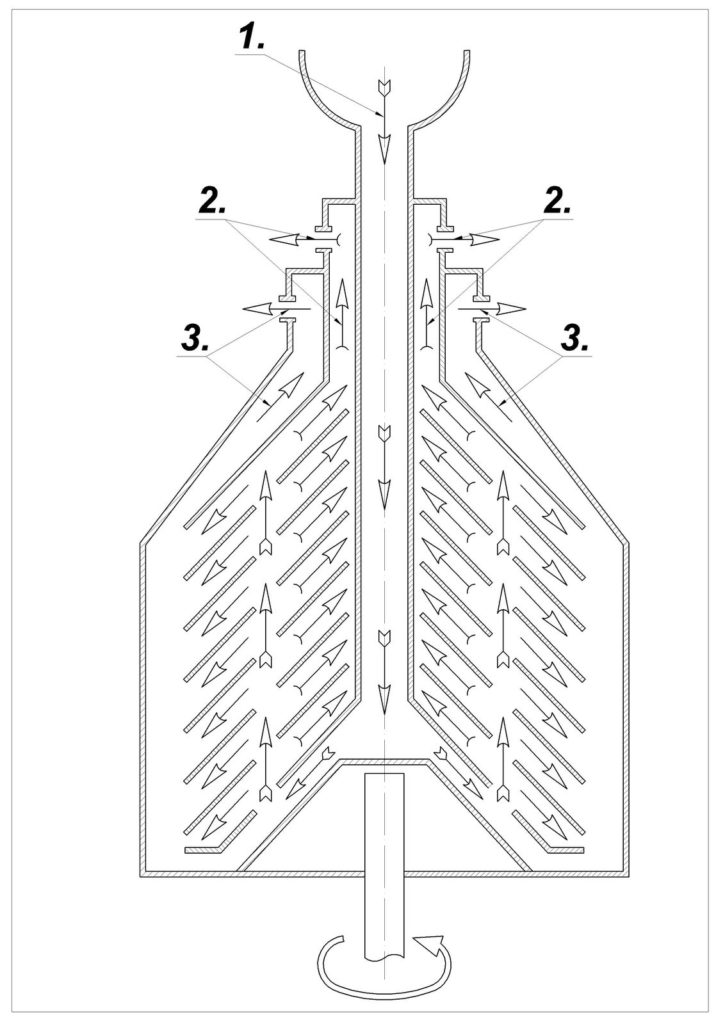
You can adjust the fat content by increasing or decreasing the space near the center of rotation.
Criterias of choice
What to look for when choosing a separator? Let's list the main characteristics.
- Material... Each material has its own advantages and disadvantages. Parts are made of metal (aluminum or stainless steel), plastic.
Plastic parts are light in weight, but they are difficult to clean, easily scratched, deformed. Metal - stronger, better cleaned, but heavier in weight. Aluminum options can speed up the fermentation processes in products, they are afraid of aggressive cleaning agents. Therefore, the most practical are stainless steel parts.
- Control. By the type of control, separators are divided into electrical and manual. Electric models are more powerful and convenient. With their help, you can process more product in the same time, your hands do not get tired, and you can do something else in parallel. The obvious disadvantage is that you need electricity to work. Therefore, if there are power outages in the area where you live, then you need to either stock up on an electric generator or take a manual model. Experienced farmers advise taking both options for large farms.
- Bowl capacity. Depends on the amount of milk processed. For comfortable work, the bowl should be at least half full, but it should not overflow either. The optimal volume is 5-10 liters for home use.
- Unit dimensions... Smaller models take up less space but process less product per minute.
- Revolutions per minute. It happens from 8 to 14 thousand per minute. It doesn't matter for cow raw materials. If you want to work with goat milk, use a higher speed machine.
- Performance. Household dividers are not designed for large volumes and produce between 50 and 100 liters per hour. The indicator is given by the manufacturer without taking into account the break for engine rest, washing of plates, drum. On average, modern separators can operate continuously for half an hour; the plates need to be washed every few tens of liters. Therefore, when choosing a device, you need to take into account not only your needs and plans, but also the real capabilities of technology.
Selection errors
Now let's figure out which parameters users don't always pay attention to and what it threatens.
- Manufacturer country. Of all the companies that produce separators, it is better to give preference to domestic ones. This will facilitate the search for spare parts, negotiations with technical support in case of problems. Unfortunately, the Russian name is not an indicator of Russian production. On sale you can find Chinese equipment that costs a little less, but loses in terms of build quality and durability.
- Pay attention to the assortment of the company. If it also contains products for agriculture, for example, butter churns, electric shepherds, this speaks in favor of this manufacturer.
- Separator drum diameter. The size of the drum affects the processing speed of the product, the fat content of the cream, the possibility of processing goat milk. The larger the drum size, and, therefore, the diameter of the separator trays, the more fatty cream can be obtained using the device and the less often you will have to interrupt rinsing the trays. On average, they have to be cleaned every 15-30 liters. The recommended drum size is at least 11 cm.
- Engine's type. Motors in electric separators are of two types: valve, collector. The first motors are less reliable due to the presence of an electronic control board in their design. Poorly tolerate voltage drops, easily fail, burn out. Collector motors are more reliable, they tolerate power surges better. The only drawback is that graphite brushes need to be replaced every 8-10 years. The part can be found in any market with power tools.
- Warranty, spare parts. The minimum warranty period is 1 year. Ask a consultant, as well as on specials. forums about the possibility of buying spare parts.
- The most problematic parts of the separator are the plastic separating discs, the adjusting screw, the O-ring. Without any of these parts, the device will not be able to work, and if there is no place to purchase them, you will have to buy a new separator.
- Please note that the parameters mentioned in this section are not always published on advertising sites. Therefore, be sure to check the information with the manufacturer.

Top manufacturers
The manufacturer is one of the key parameters when choosing any technique. It depends on it how and in what conditions the unit was assembled, how long and efficiently it can work. The manufacturer provides not only the product, but also the accompanying service to it: warranty, repair, spare parts. We analyzed the opinions of experts and ordinary users of agricultural machinery, and compiled the following list of trustworthy manufacturers of milk separators.
Russian manufacturers:
- Rotor separator plant;
- "Siberia" Omsk separator plant;
- PJSC "Penzmash";
- Uralspetsmash (Miass);
- "Hydroelectric unit";
- PJSC "Neptune";
- LLC Ural Plant of Household Products.
And also the Ukrainian Zaporozhye plant Motor Sich JSC.
Chinese manufacturers: "Clever", "Craftswoman".
Rating of quality milk separators in 2020
We offer you a list of the most reliable and efficient milk separators with detailed descriptions, pros and cons. The options from the list differ significantly in price: you can choose both an inexpensive model and a higher class. We hope that our review will help you make the right choice.
Rotor SP 003-01
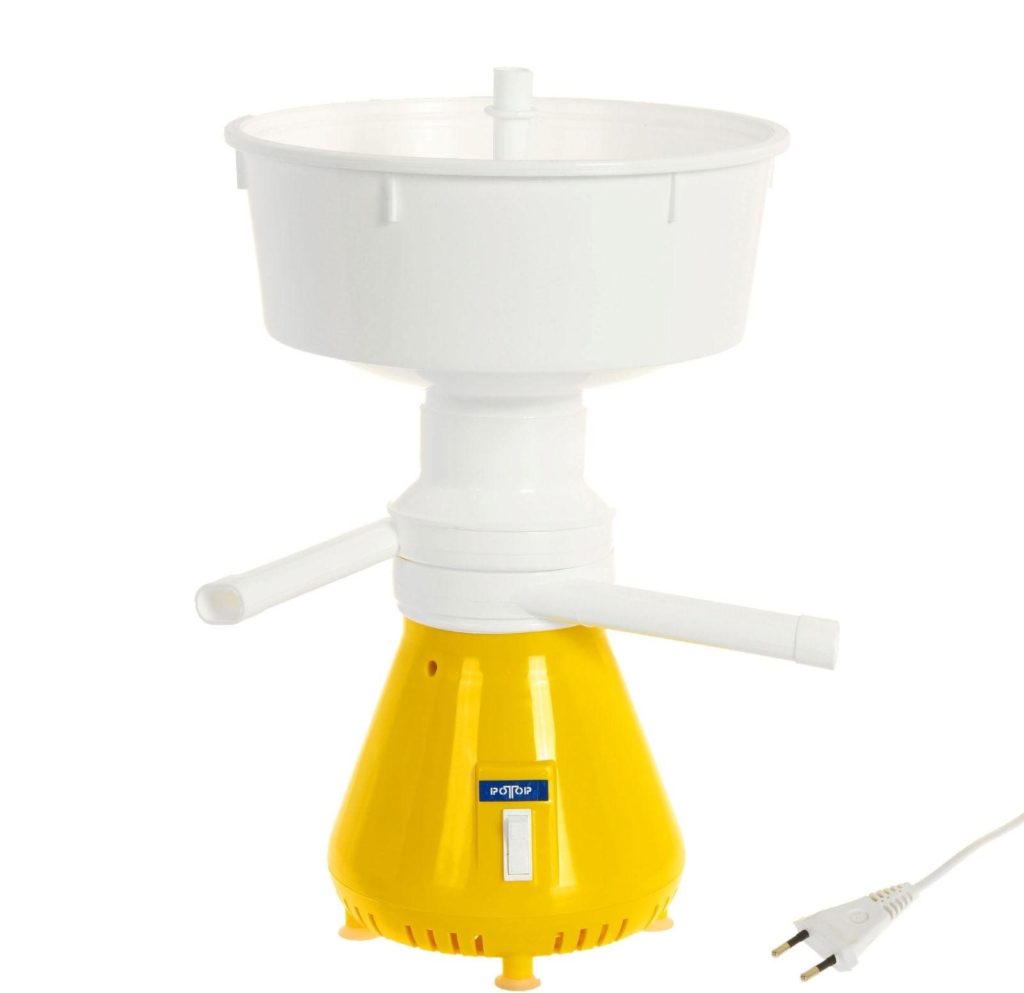
The model with a small capacity (up to 55 liters per hour) is a good option for beginner farmers who separate milk 1-2 times a week.
Specially installed filters allow you to clean the final product from impurities and impurities. The device also has a convenient function for adjusting the fat content of the product.
Average price: 1919 rub.
Advantages:
- inexpensive;
- divides at speeds from 12 thousand revolutions;
- easy to manage;
- suitable for goat, cow milk;
- low energy consumption;
- lightweight, compact;
- available in two colors - yellow, red;
- a bowl of heat-resistant plastic for 5.5 liters;
- goes to operating mode in 2 minutes.
Disadvantages:
- noisy;
- poor quality assembly;
- long wash parts.
Motor Sich 100-18
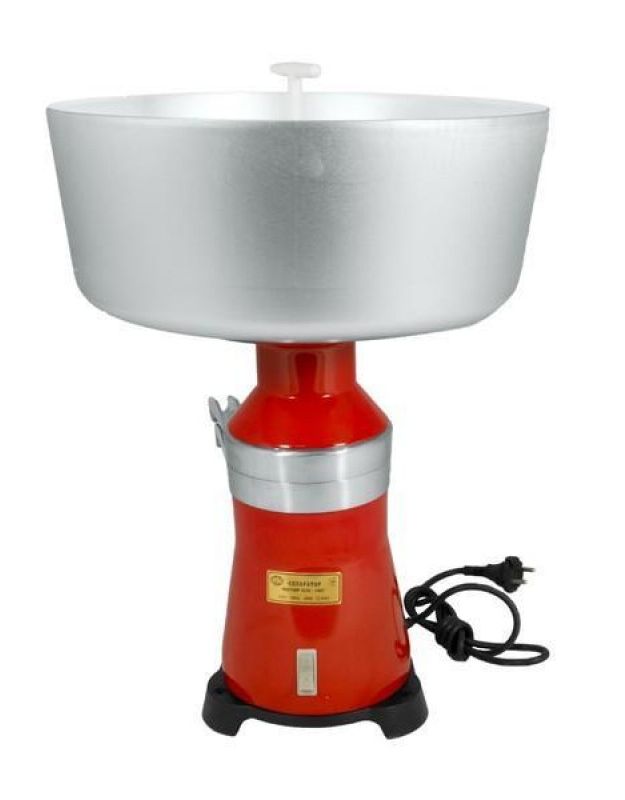
The Ukrainian model is distinguished by high performance (up to 100 liters of milk per hour), low energy consumption (60 W) and low noise and vibration levels. Easy to operate, durable.
From 7.5 liters of milk, the unit produces half a liter of cream. In the process of separation, the device cleans the milk from debris and impurities.
Average price: 7848 rub.
Advantages:
- large bowl of milk receiver - 12 l;
- sturdy metal body.
Disadvantages:
- aluminum bowl;
- according to user reviews, the manufacturer's technical support does not always answer questions in time, which complicates the operation or repair of the device.
Penzmash RZ-OPS-M
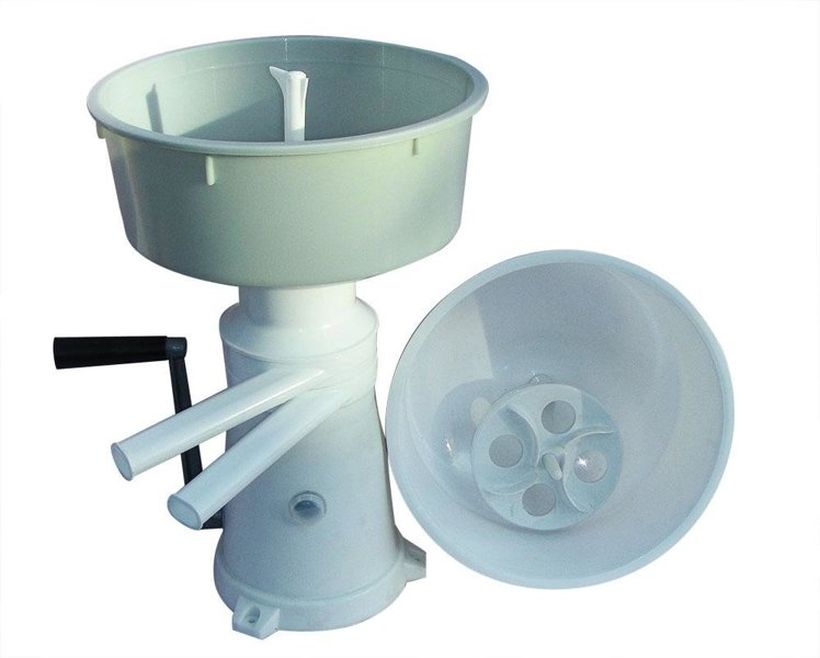
Convenient 2-in-1 handheld appliance that saves money and space in the kitchen. Combines separator and churn functions. Separates cream from milk, knocks down butter. Cleans dairy raw materials from debris.
With the help of the device you can make sour cream, homemade mayonnaise, cottage cheese, various cocktails, and also knead the dough.
Average price: 3221 rub.
Advantages:
- budgetary;
- compact;
- quickly, in just 10 minutes, whips butter;
- milk receiver volume - 5.5 l;
- productivity of 50 l / h;
- metal drum;
- churn.
Disadvantages:
- the model is difficult to assemble or disassemble;
- easily soiled case;
- the declared service life is 3 years.
Farmer ES-02
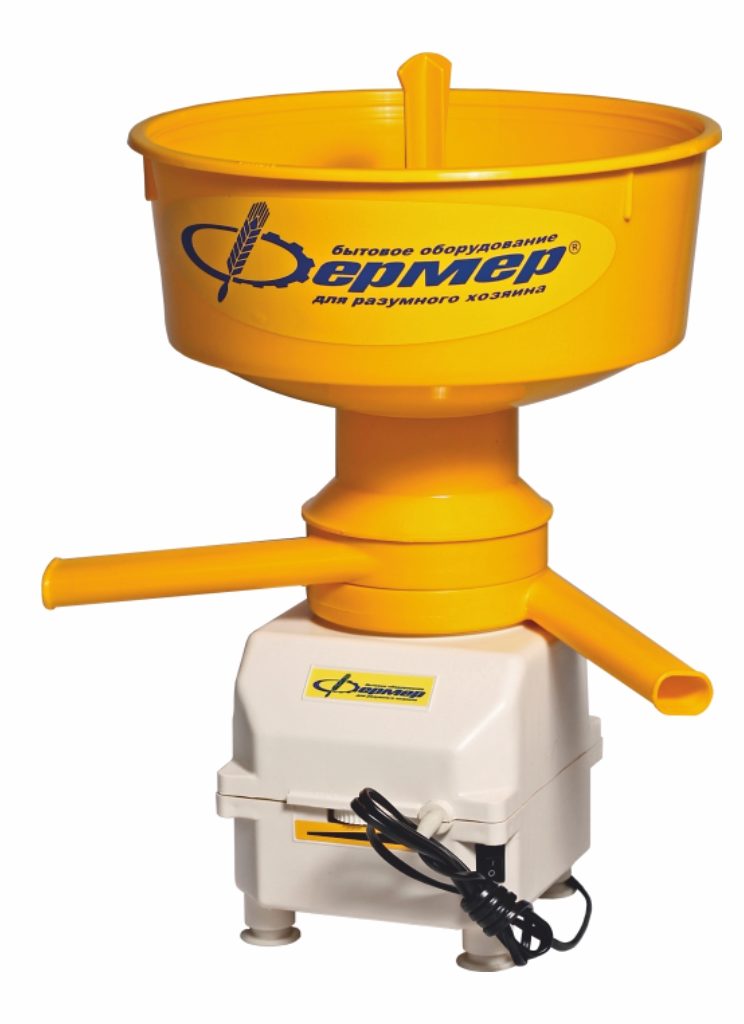
A device with a high performance (up to 80 liters per hour) with a convenient adjustment of the fat content of the cream and protection of the motor from overloads.
Average price: 5010 rub.
Advantages:
- lightweight - 3 kg;
- quiet;
- compact;
- easy to assemble, manage;
- complies with SanPin standards;
- the volume of the bowl is 5.5 kg;
- food steel cylinder.
Disadvantages:
- not found.
Hydroelectric unit Berezka
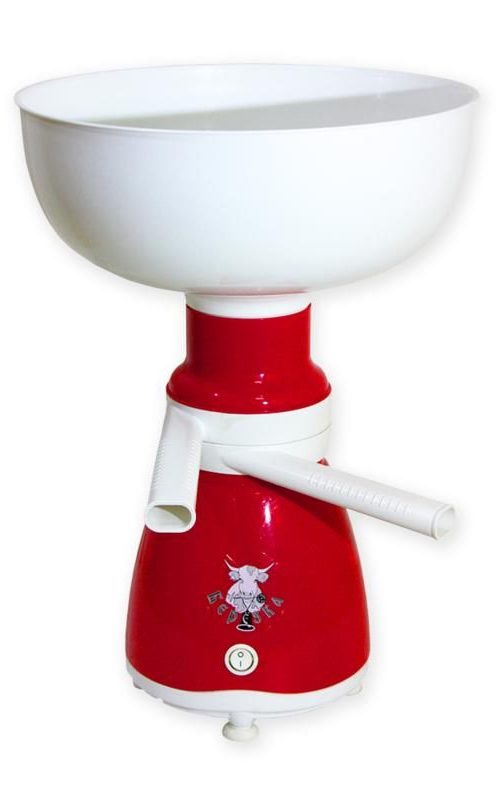
The model with an average capacity of 60 liters per hour can process both goat and cow milk. This is possible due to the high rate of rotation of the drum - up to 14 thousand rpm.
Average price: 1990 rub.
Advantages:
- budgetary;
- compact;
- average power consumption - 200 W;
- stable, there are non-slip legs;
- bowl made of strong food grade plastic;
- does not overheat;
- quiet, does not vibrate;
- stylish red body;
- easy to assemble and disassemble, wash;
- easy to operate.
Disadvantages:
- not found.
Neptune kazhi 061261.002
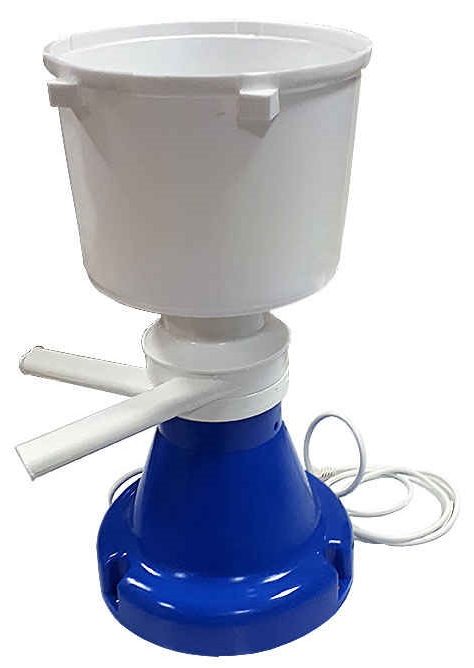
A budget model with the ability to adjust the ratio of fractions, as well as a modern engine capable of operating at low voltage. Average productivity of the device is 50 liters per hour.
Average price: 2700 rubles.
Advantages:
- small;
- easy to use;
- reliable;
- sold in white and blue;
- there is motor overload protection;
- durable - the specified service life is 8 years.
Disadvantages:
- spare parts are rarely on sale.
Ural M
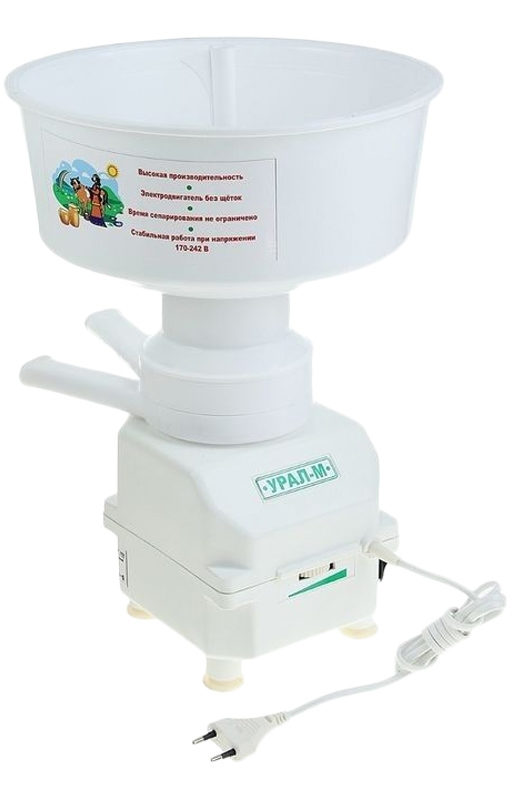
A compact, productive home assistant capable of processing up to 80 liters per hour. Working frequency - from 9 to 12.5 thousand revolutions allows you to process any milk. There is a fat content adjustment. Time of continuous work - half an hour.
Average price: 4600 rubles.
Advantages:
- easy;
- small;
- quiet;
- does not get warm during work;
- body made of sturdy plastic;
- loading bowl for 5.5 liters;
- able to process large amounts of milk;
- economical energy consumption;
- there is overload protection;
- available in two versions - with and without speed control.
Disadvantages:
- easily soiled case.
Om-3
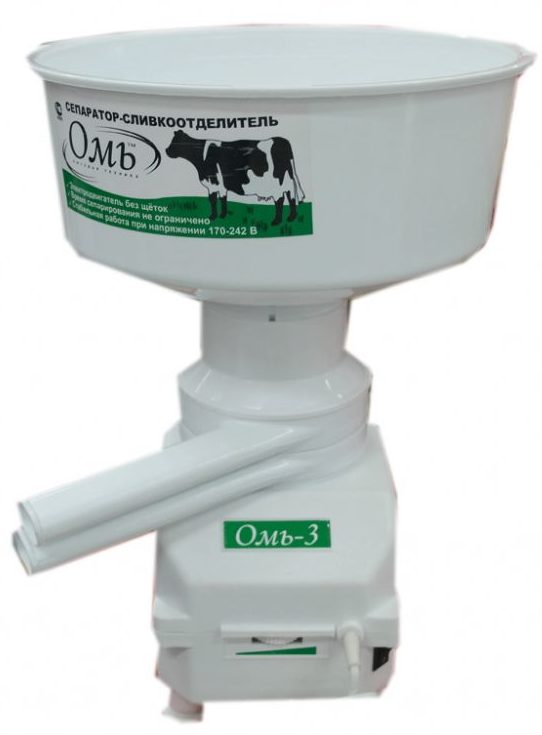
The device is suitable for processing both cow and goat milk. Moreover, it is currently the most popular goat milk processing model on the Russian market.
The device has decent performance. Milk receiver for 5.5 liters with the possibility of topping up, capacity up to 60 liters per hour. The drum rotation frequency is up to 12.5 thousand revolutions per minute. It is possible to adjust the fat content of the cream during operation.
Comes to operating mode in 1-2 minutes. It can work with voltage drops (from 17 to 242 W).
Average price: 4272 rub.
Advantages:
- quiet;
- easy;
- compact;
- not heated;
- built-in voltage regulator;
- does not spray the product during operation.
Disadvantages:
- not.
UMNITSA SMR-100
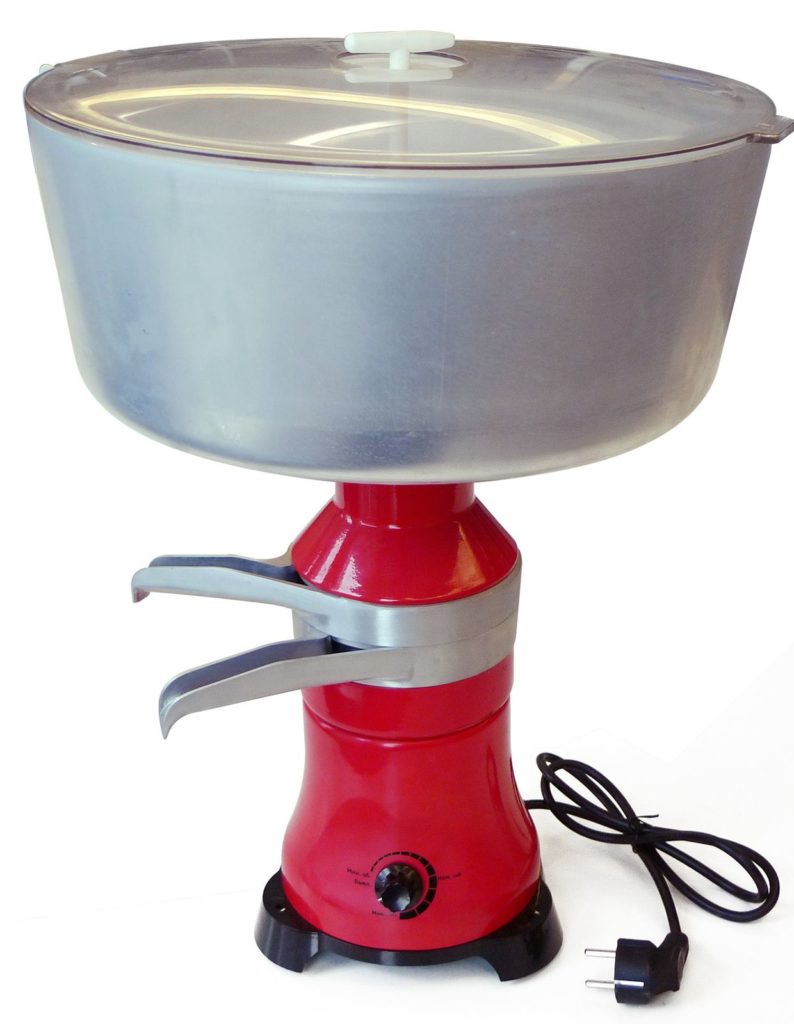
A good model for both a small farm and a home. The parts of the mechanism are made of either aluminum or polypropylene. At a high processing rate of the product (10 liters per hour), the device does not differ in "gluttony", because its power is only 200 watts. High drum rotation frequency (up to 12.5 thousand revolutions per minute) makes it possible to separate goat and cow milk. Special filters clean the milk mass from small debris.
Time of continuous work - half an hour.
Average price: 6320 rub.
Advantages:
- quiet;
- capacious bowl for 10 liters.
Disadvantages:
- heavy;
- some parts are made of food grade aluminum.
MASTER ESB04-02
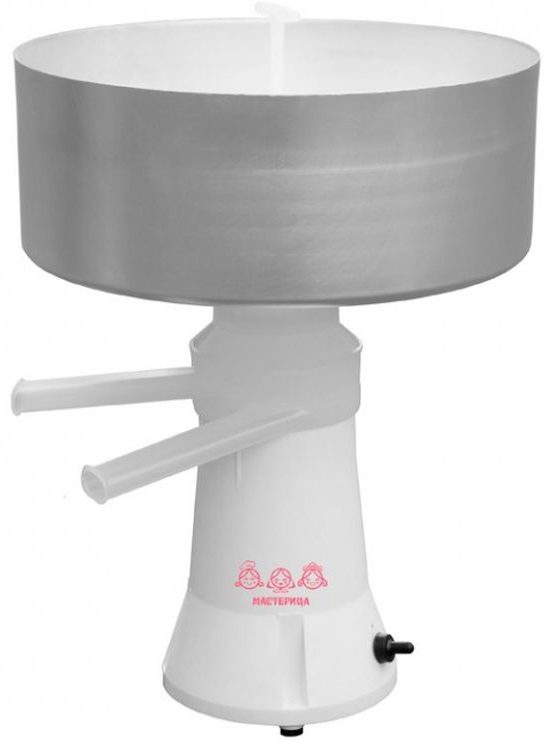
A reliable device with a choice of quality and consistency of the finished product was developed specifically for the processing of small batches of milk, at home. Most of the parts are made of high strength, rigid food grade plastic.
The model is capable of processing large quantities of milk up to 80 liters per hour. The milk receiver holds 12 liters. Time of continuous work - 1 hour.
Average price: 6382 rub.
Advantages:
- 11 cymbals in a drum;
- does not vibrate during operation.
Disadvantages:
- food grade aluminum drum.
Siberia-2
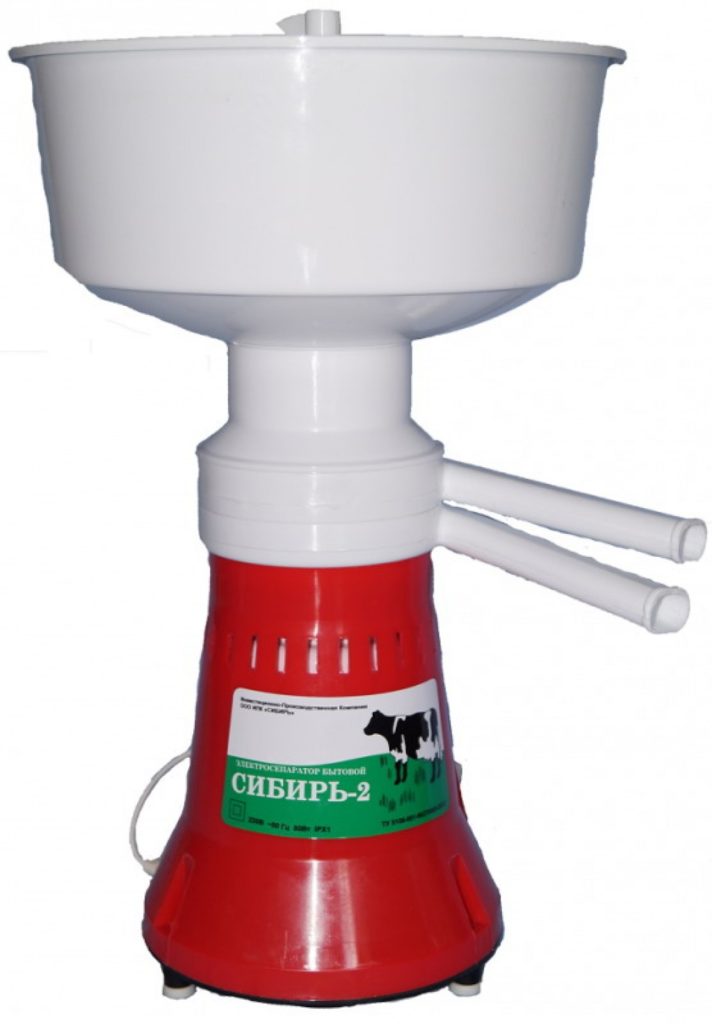
The device features a modern design, ease of use and a reliable 80 watt motor. The minimum drum rotation speed of 12 thousand revolutions makes it possible to process both cow and goat milk up to 60 liters per hour. Reaches working speed in 2 minutes. Time of continuous work - up to half an hour.
Average price: 3150 rubles.
Advantages:
- quiet;
- milk receiver for 5.5 liters;
- quality of materials and workmanship.
Disadvantages:
- not found.
HYDRO UNIT SMTS-80
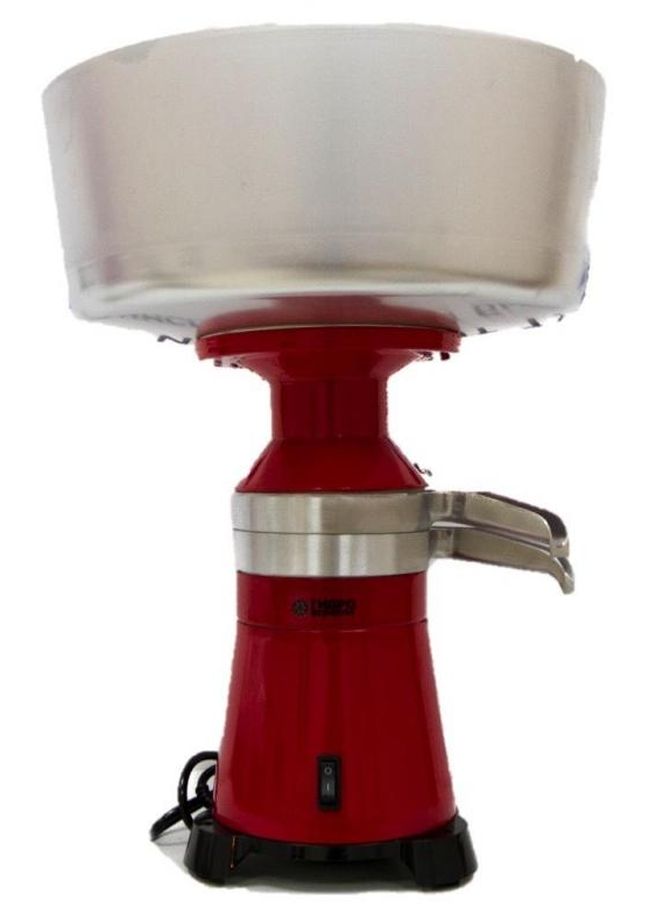
High-performance model (up to 80 liters per hour) with the longest continuous operation in our rating - 1 hour. The maximum frequency is 12 thousand revolutions, which makes it possible to process goat and cow milk. There is a small debris cleaner.
Average price: 6750 rub.
Advantages:
- capacious milk receiver for 10 liters;
- 11 plates;
- cools down in 20 minutes.
Disadvantages:
- heavy, bulky;
- there is no adjustment of the fat content of the product;
- aluminum parts.
Conclusion
We hope our recommendations and advice will help you choose a reliable assistant.
If you have experience with one of the milk separators discussed in this review, or know a more interesting and productive device, share your impressions in the comments.












